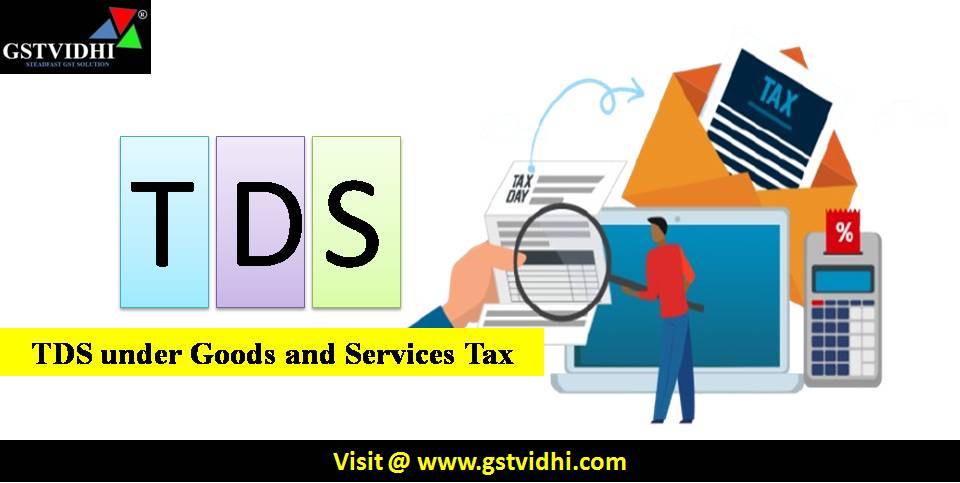
TDS Under Section194Q / TDS on Purchase of Goods
Under Goods and Services Tax / Circular No. 13 of 2021
By Yogesh Verma (CS/LLB) / 2 min read / Article
The Government of India introduced Section 194Q in
the Income-tax Act, 1961, through the Finance Act, 2021. This section became
effective from July 1, 2021, and requires a buyer to deduct Tax
Deducted at Source (TDS) while making payments for the purchase of goods
exceeding a certain limit. To clarify its implementation, the Central Board
of Direct Taxes (CBDT) issued Circular No. 13 of 2021 on June 30,
2021. Let’s break down this circular into simple points for better
understanding.
1. What is Section 194Q?
Section 194Q applies to buyers who purchase goods from
resident sellers where the total purchase value exceeds ₹50 lakh in a
financial year. The buyer must deduct 0.1% TDS on the amount exceeding
₹50 lakh at the time of payment or credit, whichever is earlier.
2. Who is Considered a Buyer?
A buyer under this section is defined as:
- A
person or business whose total sales, turnover, or gross receipts exceed
₹10 crore in the financial year immediately preceding the purchase
year.
- The
government may notify certain persons who will not be considered as buyers
under this section.
3. When is TDS Deducted?
- The
buyer must deduct TDS when either making the payment or crediting
the seller’s account, whichever happens first.
- If
the purchase value does not exceed ₹50 lakh, no TDS is required.
- If
payments were made before July 1, 2021, they are not covered under
this section.
- However,
while calculating the ₹50 lakh threshold, payments made since April
1, 2021 are included.

4. Key Clarifications from Circular
No. 13 of 2021
4.1 Transactions through Stock &
Power Exchanges
Certain transactions do not require TDS deduction under Section
194Q, including:
- Stock
and commodity exchanges
where trading is done through recognized stock exchanges or clearing
corporations.
- Power
exchanges where transactions involve
electricity, renewable energy certificates, and energy-saving
certificates.
4.2 Calculation of the ₹50 Lakh
Threshold
- Payments
made before July 1, 2021 are not subject to TDS.
- However,
to check whether TDS is applicable, purchases made from April 1, 2021,
are counted toward the threshold.
4.3 Treatment of GST & Purchase
Returns
- GST
Exclusion:
- If GST is separately mentioned in the invoice, TDS is
deducted excluding GST.
- If TDS is deducted on payment instead of credit, the full
amount (including GST) is considered.
- Purchase
Returns:
- If TDS was deducted on a purchase that was later
returned, the deducted TDS can be adjusted against future purchases.
- If the purchase is replaced with new goods, no
adjustment is needed.
4.4 Non-Residents as Buyers
- A
non-resident buyer does not need to deduct TDS under Section 194Q unless
the purchase is connected to a permanent establishment (PE) in India.
4.5 Exempt Sellers
- If
the seller’s income is exempt from tax, TDS under Section 194Q is not
applicable.
- However,
this exemption is valid only if the seller’s entire income is exempt,
not just a portion.
4.6 Advance Payments
- If
a buyer makes an advance payment, TDS must be deducted at the time
of payment.
4.7 Applicability in the First Year
of a Business
- Since
a buyer must have ₹10 crore turnover in the previous year to be
covered under Section 194Q, a newly incorporated business is exempt in
its first year.
4.8 Businesses with Turnover Below
₹10 Crore
- If
a business has gross receipts exceeding ₹10 crore, but its business
turnover is ₹10 crore or less, Section 194Q does not apply.
5. Additional Considerations Under
Section 194Q
5.1 Impact on MSMEs
- Many
small and medium enterprises (MSMEs) fall under the purview of this
section if they exceed the ₹10 crore turnover limit.
- MSMEs
should ensure proper record-keeping and compliance to avoid penalties.
5.2 Consequences of Non-Compliance
- If
the buyer fails to deduct TDS under Section 194Q, they will be liable for interest
and penalties under the Income-tax Act.
- Expenses
on which TDS was not deducted may be disallowed in the income tax
computation, increasing the taxable income of the buyer.
5.3 Reporting Requirements
- Buyers
need to report TDS deductions under Form 26Q while filing TDS
returns.
- TDS
certificates should be issued to sellers in Form 16A.
6. Interaction Between Section 194Q
and Other Tax Provisions
The circular explains how Section 194Q interacts with
other provisions like Section 194-O and Section 206C(1H):
|
Scenario
|
Action Required
|
|
TDS deducted by e-commerce operator under Section 194-O
|
No further deduction under Section 194Q
|
|
Transaction covered under Section 206C(1H) (TCS on sale
of goods)
|
TDS under Section 194Q is applicable instead of TCS
|
|
Both Section 194Q and 206C(1H) apply
|
The buyer must deduct TDS under Section 194Q; if the
seller has already collected TCS before the buyer deducts TDS, no further
deduction is needed
|
7. Conclusion
Circular No. 13 of 2021 provides much-needed clarity on the practical
aspects of implementing Section 194Q. It ensures smooth compliance by
outlining the situations where TDS is applicable and addressing concerns
related to GST, purchase returns, non-resident buyers, and exempt sellers.
Businesses should carefully track their turnover, payment thresholds, and
tax deductions to comply with these provisions.
By understanding these rules in simple terms, taxpayers can
ensure compliance and avoid unnecessary penalties. If you are a business with a
turnover above ₹10 crore, make sure to check whether your purchases
cross the ₹50 lakh threshold and comply accordingly!
Disclaimer: All the Information is based on the notification, circular and order issued by the Govt. authority and judgement delivered by the court or the authority information is strictly for educational purposes and on the basis of our best understanding of laws & not binding on anyone.
Click here